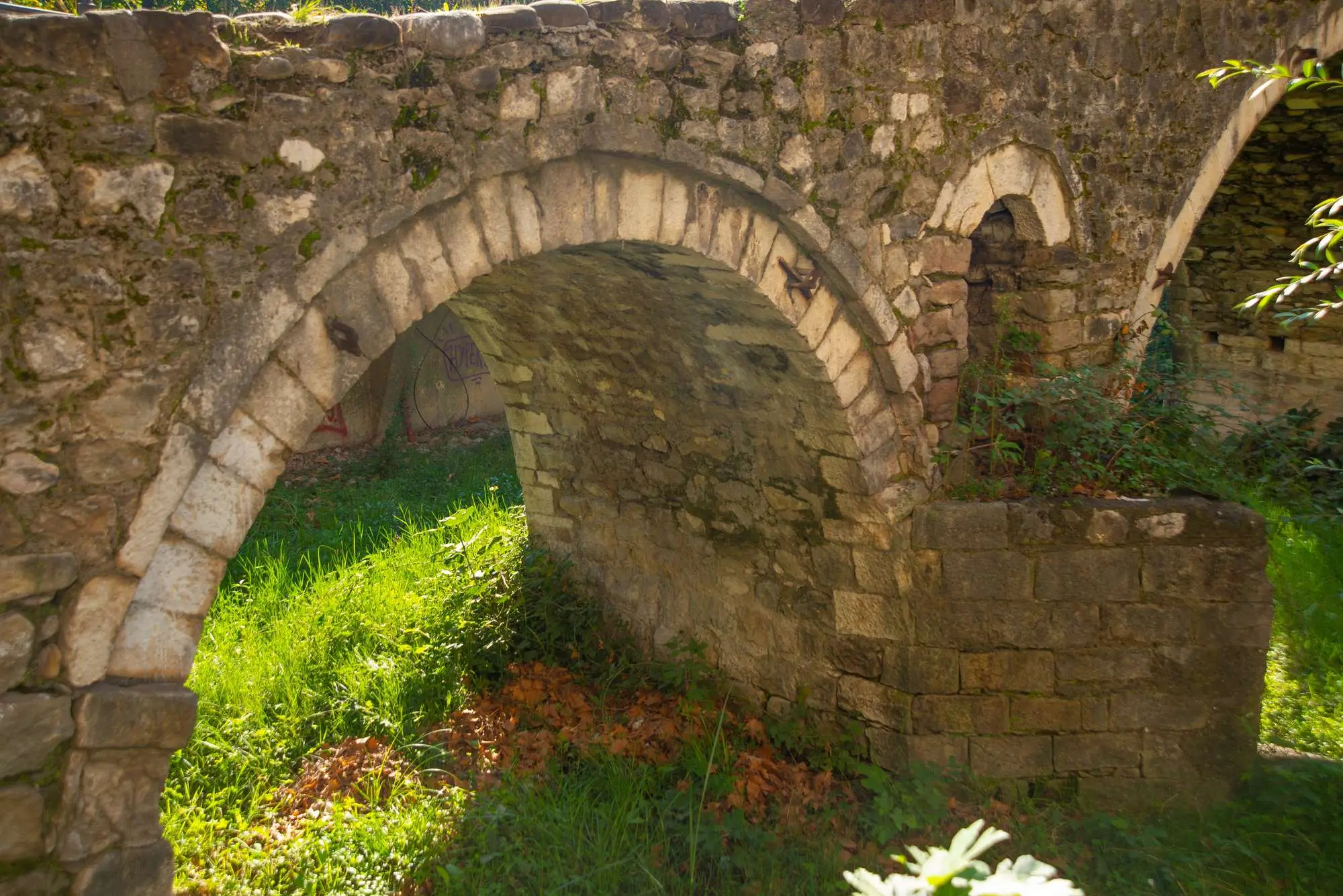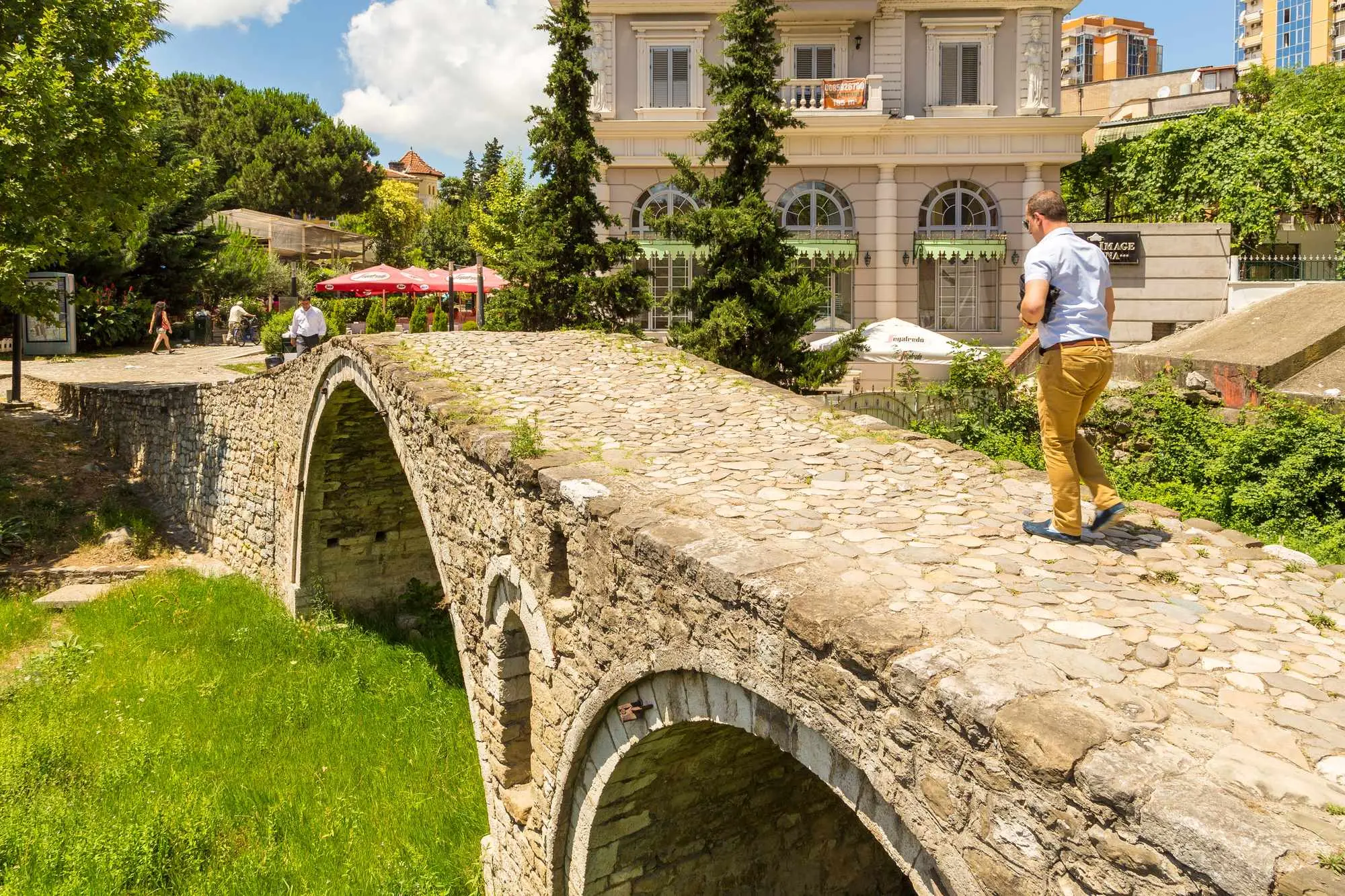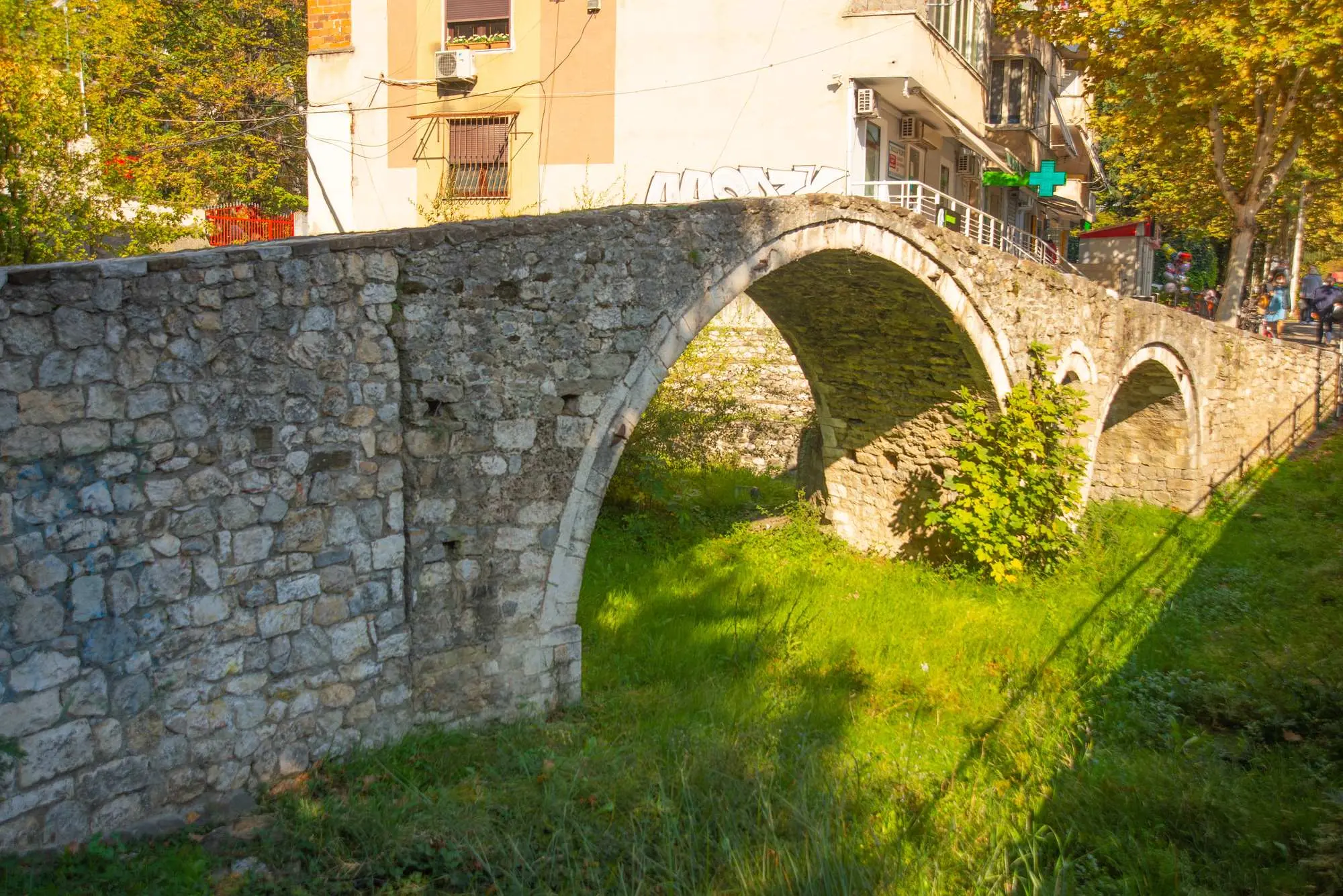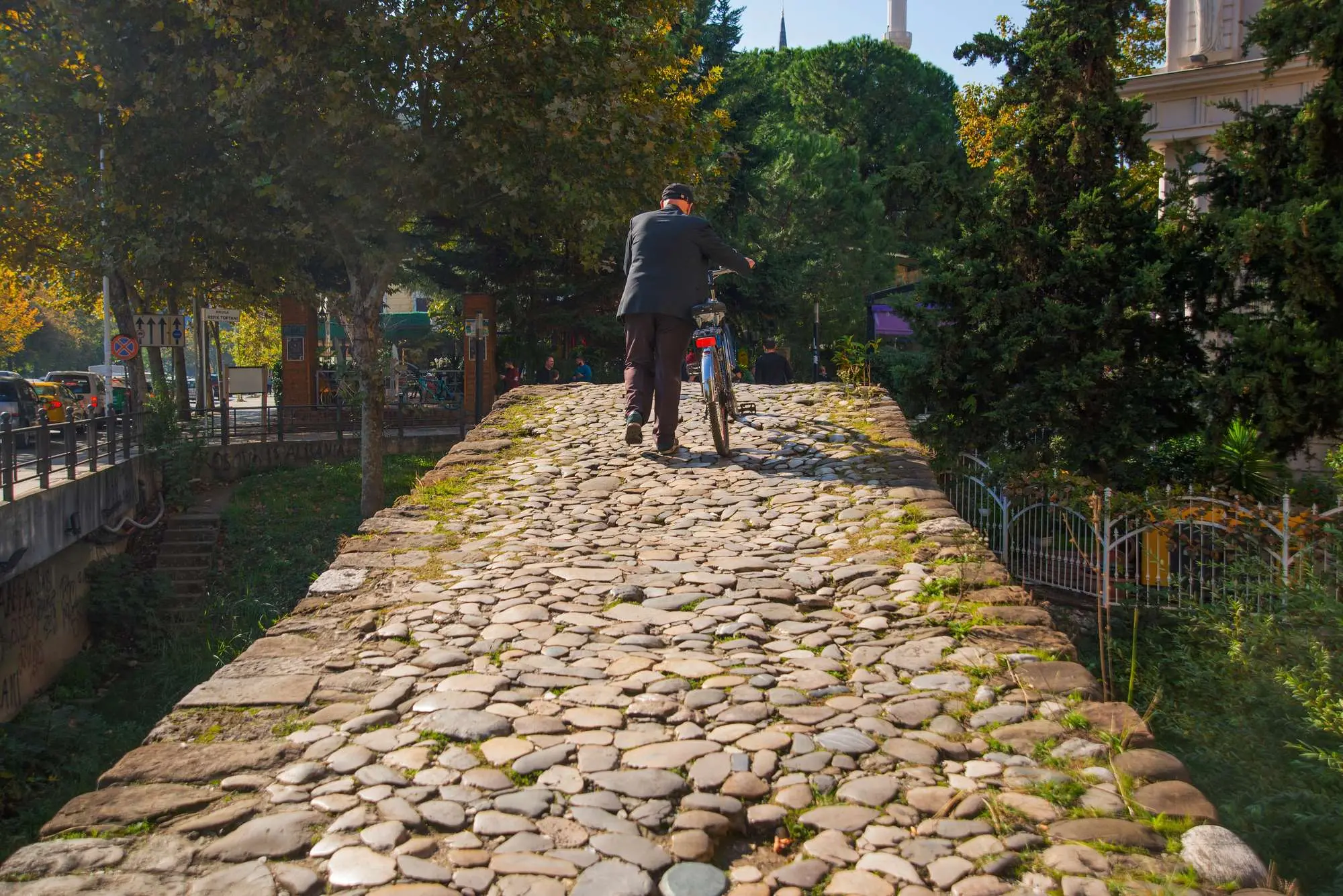Tanner’s bridge: one of the last monuments of the Ottoman period in Tirana!
The Ottoman period marked a significant part of Albania’s history, leaving an indelible mark on its architecture. One of the most striking examples of this heritage is bridges, which serve as key links between different regions. These bridges, like the Mesi bridge in Shkodër, are characterized by their elegant construction and functionality and testify to the skill of the Ottoman builders. Their construction followed trade routes and facilitated the flow of goods and people.
In this context, the Tanner’s Bridge (Ura e Tabakëve) in Tirana represents a special example of preserved Ottoman infrastructure. Located in the modern heart of the Albanian capital, this bridge tells the story of a time when today’s capital was just a small commercial center surrounded by artisan workshops and agricultural estates.

Tanner’s Bridge, Photo: A1804 Depositphotos
The Tanner’s Bridge was built in the 18th century as part of the strategic route of St. George, which connected Tirana with the mountainous regions to the east. The bridge served as a key crossing over the Lanë River, facilitating the transport of livestock, hides, and other goods towards the city center. The area around the bridge was known for its tanneries, vital to the local economy. The name of the bridge comes from the word “Tabakë,” which means tanners.
The bridge is built of stone with a main archway and two smaller side arches, which is typical of Ottoman architecture. In addition to its functional role, it was also a meeting place for merchants and craftsmen.

Tanner’s Bridge, Photo: raagoon Depositphotos
However, with the modernization of Tirana and the redirection of the Lanë River in the 1930s, the bridge lost its primary function. Abandoned to the ravages of time, it also experienced a period of neglect. However, during the 1990s, its historical value was recognized, and it was renovated and adapted for pedestrian traffic.

Tanner’s Bridge, Photo: A1804 Depositphotos
Today, Tanner’s Bridge is a symbol of historical continuity in the urban fabric of the capital city. Located in the immediate vicinity of modern buildings, the bridge serves as a reminder of the past and the Ottoman legacy. Its preserved architecture attracts tourists and historians, while it offers the local population a peaceful place for walks and socializing.
The preservation of this bridge symbolizes the importance of protecting cultural heritage, not only as an aesthetic element but also as a testimony of the history and identity of a city. It is one of the rare examples in Tirana where past and present live in harmonious coexistence, inspiring generations of visitors and residents.




Leave a Reply